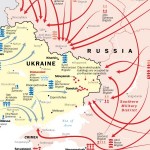I have nothing to add to this one except to say, there once was a time when the oath and sense of duty meant something.
WEST PALM BEACH, Florida, May 2, 2014 – Benghazi showed us a difficult truth. Once upon a time, the CIA left no man behind. The Agency took care of its own, even in the face of disapproval from the public or from other government organizations. Right or wrong, the Agency did everything it could to protect its employees.
And the leaders in the United States Government backed those decisions, anxious to protect Americans overseas.
That was the CIA that saved Dick Holm; that went into the Congo not once but twice to rescue him.
In 1964, Dick Holm was a young CIA officer. After a two-year tour in Laos and Thailand, Holm was assigned to the Congo, to collect intelligence and support Belgian operations in the country.
One day in 1965, the chief of the air unit directed Holm to conduct an air survey of the area to determine whether arms and ammunition were coming across the border with Sudan. Holm was to ride with pilot Juan Peron in his T-28, a two-seater plane where the passenger sits behind the pilot. The mission was to gather intelligence but, even more importantly, to attack military targets
Holm tells how he and Peron spotted some trucks and a power plant, and Peron attacked both targets.
After the attacks, the weather turned threatening, blowing the plane off course. Lost and low on fuel, Peron decided to take the plane down before dark while he still had the ability to land in a clearing. They crash-landed into the jungle.
During the landing, Holm was splashed with flaming jet fuel on his face, his hands and his legs. Juan was unhurt. The plane was on fire. Holm’s eyes were seared shut from the fire and he had little use of his hands. He could smell fire and hear Juan yelling at him to get out of the plane. He used his elbows to release the harness and then crawled out of the plane, and Juan helped him get away from the plane minutes before it exploded.
Holm was weak and barely able to move, and he and Juan were in enemy territory with no support. Holm says he knew burns meant dehydration and infection, and the jungle was an inhospitable place for someone hurt as badly as he was. Holm says in his book, “Juan used his knife to cut charred skin hanging from several of my fingers. There were already bugs on some of my burns.”
Holm and Juan were also in enemy territory. Simba rebels, the force the Belgians and Americans opposed, were in the jungle and would not hesitate to kill Holm and Juan if they found them. They were known to eat their enemies after killing them, believing they gained strength from eating their vital organs.
The next morning, Juan found a village. Village Chief Faustino agreed to help Holm and Juan to safety, and to take care of Holm while Juan went for help. When Juan and the villagers came back to Holm, he was covered in bees and barely conscious.
The villagers made a litter and carried Holm back to the village. They cared for his burns and dug out the worm-like bugs that had burrowed into his wounds. They applied a salve that hardened and created a type of coating, which Holm credits with saving his life. Juan and two villagers left Holm in the village to go for help.
READ ALSO: How America failed, and continues to fail, at Benghazi investigation
Eight days later, Juan and the villagers arrived at an air station in Paulis. Within two hours, the Agency officers at Paulis received permission to use one of the Belgian helicopters at the field to rescue Holm. They also sent a T-28, piloted by Juan, and the air operations chief in Paulis had ordered a C130 to be at Paulis to transport Holm as soon as he arrived.
When the helicopter crashed on landing to rescue Holm, the air operation authorized a second helicopter to take its place.
That second helicopter saved Holm, and returned him to Paulis. He then immediately was transferred to the C130 and sent to a hospital in what was then Leopoldville, now Kinshasa.
Holm also reports that when CIA headquarters heard Holm was in Paulis, Dick Helms, the Deputy Director for Plans, now the Directorate of Operations, immediately went to Director of Central Intelligence John McCone and said the only way to save Holm’s life was to get him to the National Burn Center in San Antonio, Texas. The DCI called Secretary of Defense Robert McNamara, who authorized the US Air force to deploy a 707 to carry a burn team to care for Holm.
Holm survived, and after years of painful rehabilitation, returned to have an extraordinary 35-year career at the CIA.
The U.S. government went in to rescue Holm, one man, and spared no expense to give him the best care possible.
Where was that CIA on September 11, 2012?
On September 11, 2012, CIA-affiliated officers stood on a roof in Benghazi for seven hours waiting for help from the U.S. government. None came. Eventually, they could no longer hold back the terrorists, and they lost their lives.
Charles Woods and Glen Doherty, part of a Global Response Staff that provides security for CIA officers overseas held off hostile attackers at the US Consulate in Benghazi for seven hours on September 11. For seven hours after Ambassador Christopher Stevens and Sean Smith were attacked, they manned machine guns on the roof of the CIA annex and defended US territory and personnel. They called for help but were ignored.
While the public still does not know exactly what happened in Benghazi, we do know that US government leaders did not deploy forces to rescue Americans stranded on a rooftop taking enemy fire. We know that for seven hours, those men called for assistance were ignored.
We don’t know where leaders were on September 11. We do know they were not on a rooftop in Benghazi and they did not send help, despite seven hours of requests.
We know they left those men behind.
Lisa M. Ruth
Lisa M. Ruth started her career at the CIA, where she won several distinguished awards for her service and analysis. After leaving the government, she joined a private intelligence firm in South Florida as President, where she oversaw all research, analysis and reporting. Lisa joined CDN as a journalist in 2009 and writes extensively on intelligence, world affairs, and breaking news. She also provides CDN with investigative reporting and news analysis. Lisa continues to write both for her own columns and as a guest writer on a wide variety of subjects, and is now Executive Editor for CDN. She is also a regular contributor to Newsmax and other publications.










